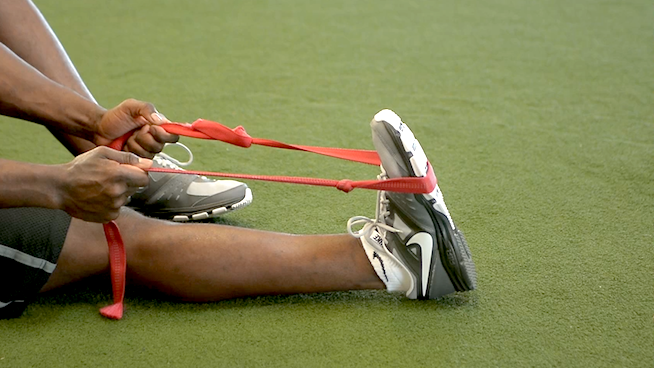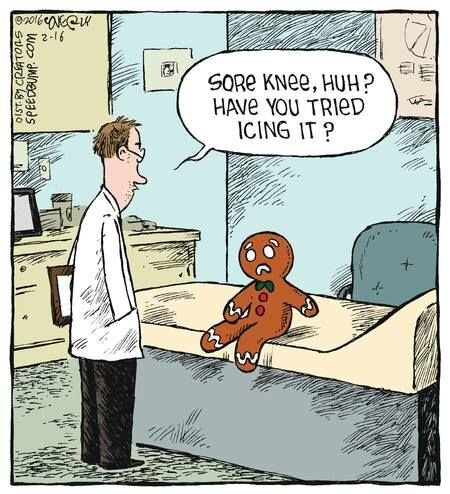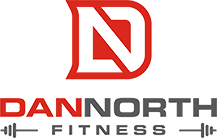After a couple years of over-training and under-recovering, my joints were starting to get pissed off, specifically my knees.
At one point, the pain was so intense that I would literally have to pull over my car after training sessions. I couldn’t sit down for more than a few min before my knees started aching. Not good.
Then to make it even better (worse), I took a hard fall off my bike…flying over my handles landing directly on my left knee (which happened to be my bad one). Word from the wise, don’t take a road bike out on steep gravel trails unless you want to eat absolute shit.

Long story short, the next day I couldn’t even bend my leg to put my socks on. It took a few months until I could walk without a limp and start to regularly incorporate lower body exercises back into my routine.
Looking back, it was a blessing in disguise because it forced me to work on my weaknesses and gave me a new outlook on training.
This experience taught me three things:
- How to train smarter to avoid or eliminate knee pain when working out so risk of injury is minimized
- How to come back stronger after a knee injury
- Don’t ride your road bike on gravel hills
4 WAYS TO FIX KNEE PAIN
A couple of quick notes before you dive into the meat and potatoes. These tips/drills/exercises/stretches will do absolutely fuck all for you if you’re not consistent with them. I can’t control how often you do them. In fact, I can’t even prescribe to you how much you should be doing them. Only you can decide that and make it happen.
What I can say is, the more consistently you are with these habits, the better your knees are going to feel.
Period.
1. ATTACK YOUR ANKLE MOBILITY
No one does this. And I bet you don’t either. If you do, kudos to you. I’ll tip my hat. Because I see no one working their ankle mobility when I’m at most gyms.

Why ankle mobility?
Take the squat as an example. Your legs have to bend to get down to the bottom of a squat. Guess what else has to bend? Your ankles. If your ankle doesn’t have the ability to bend back (aka dorsiflexion) as you try to lower yourself into a squat, you’ll get a lot of tension build-up in the knees. Your heels will raise off the floor as you try to lower yourself to the ground, causing your knees to push forward excessively.
When this happens, you have no support from your glutes or hamstrings and are putting excessive amounts of force towards the front of the knee (typically the patellar tendon is the one that suffers).
This goes for any exercise that requires you to lower yourself while keeping your feet “rooted” to the ground and maintain what I call a “heavy heel.”
Start incorporating ankle mobility drills throughout the day when you can, but especially before and after every training session to gain optimal range of motion so you can get into better positions during your workouts.
2 Amazing Ankle Mobility Drills You Should Do
2. ROLL THE FUCK OUT OF YOUR LEGS
Ever heard of SMR?
Self myofascial release is a technique used to apply pressure to your connective tissues and alleviate tension in the muscles and tendons surrounding your joints. It’s typically used with a foam roller or lacrosse ball, but with that being said, you could even use a barbell (if you can stomach it).

Your quads and IT band connect to the knee. Your IT band runs along the outside of the thigh, between the knee and the hip. Repetitive bouts of knee flexion and extension can cause tension buildup and strain in this area.
Its common for runners and lifters to experience tight or restricted IT bands due to the nature of their sports.
So what should you do about it?
Roll out your quads and IT band daily, especially before and after training. Remember, there is no prescribed amount here. If you want to make change happen, you’ll need to be consistent. That means attacking little by little every day.
3. STRENGTHEN YOUR HAMSTRINGS
Your hamstrings are one of the main supporters of the knee. They run along the back of the thigh in between the hip and the knee.
It’s extremely common for athletes to have either tight or weak hamstrings, or both! So, when knee pain is an issue, it’s usually a good idea to start strengthening the muscles that surround the knee to give it some much needed love and support.
4 Hamstring Exercises You Should Do
4. ALWAYS STRETCH AND RECOVER AFTER EVERY WORKOUT
You might be guilty of fucking off right after your last set. I get it, you have things to do and places to see.
Stop that shit.
Take at least 5 min after your workout to stretch and recover with one of, or a combination of the following:
- Breathing: Lay down on your back, close your eyes, have your palms facing up to the ceiling, and just breathe. Get your body back to a relaxed state (aka parasympathetic state aka the rest and digest system) to allow for optimal recovery.
- Static stretching: Perform static stretches at the end of your workouts to alleviate tension in the muscles.
- SMF: In addition to rolling out before your workout in order to prepare your tissue for loading, do it after training to promote recovery.
Key Points
- Take the preventative approach by working on the above methods consistently before injury occurs.
- Do more ankle mobility.
- Roll out your quads and IT band more.
- Get stronger hamstrings.
- Focus on recovery after and in-between every session.





